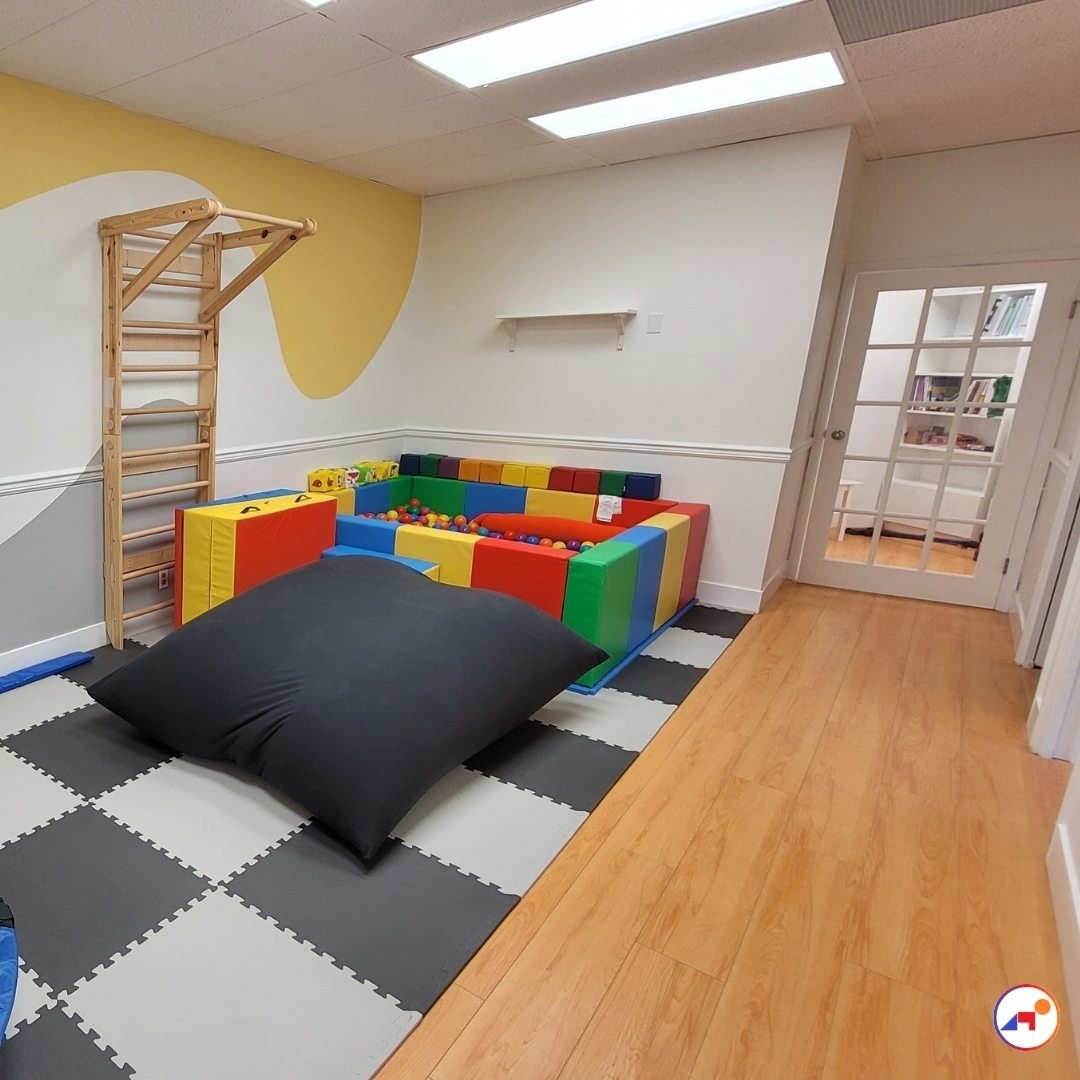When three-year-old Emma couldn’t hold a crayon or struggled to dress herself each morning, her parents felt overwhelmed and uncertain about where to turn. Fast forward six months after starting pediatric occupational therapy in Burnaby, and Emma is not only confidently drawing her first letters but also proudly buttoning her own jacket and participating enthusiastically in playground activities with her peers. This transformation isn’t unusual—it’s exactly what happens when families connect with the right pediatric occupational therapy services in Vancouver.
In 2025, pediatric occupational therapy has evolved far beyond traditional clinic-based sessions into a comprehensive, family-centered approach that seamlessly integrates clinical expertise with real-world application. Today’s leading therapy providers understand that true success happens when children can apply their newfound skills confidently at home, at school, and in their community—and that’s precisely what makes all the difference for growing families in the Vancouver area.
Understanding Modern Pediatric Occupational Therapy: More Than Just Exercises
Gone are the days when occupational therapy meant sitting at a table doing repetitive exercises. Today’s pediatric occupational therapy in Vancouver represents a sophisticated, science-based approach that addresses the whole child within the context of their daily life and family environment.
Research demonstrates that modern, family-centered pediatric occupational therapy—when started early and integrated into daily life—significantly improves children’s participation, confidence, and functional skills across home, school, and community environments, as highlighted in reports by the American Occupational Therapy Association and peer-reviewed studies in journals like the American Journal of Occupational Therapy.
Think of occupational therapy as teaching life skills through purposeful play. When skilled therapists work with children, they’re not just focusing on isolated movements or abilities—they’re helping children develop the fundamental building blocks they need to participate successfully in all the activities that matter to them, from getting dressed and eating meals to playing with friends and succeeding in school.
The comprehensive assessment process that leading Vancouver clinics like Kidstart Pediatric Therapy use examines multiple areas of development simultaneously. Therapists evaluate fine motor skills (like grasping crayons and manipulating small objects), gross motor coordination (balance, jumping, climbing), sensory processing abilities (how children respond to touch, movement, and environmental stimuli), visual-motor integration (hand-eye coordination), and executive functioning skills (planning, organization, attention).
What makes this approach so effective is its focus on functional outcomes rather than isolated skills. Instead of simply working on grip strength, therapists help children develop the specific hand skills needed to write their name, zip their backpack, or build with blocks. Rather than generic balance exercises, children practice the dynamic balance needed to navigate playground equipment safely or walk confidently on uneven surfaces.
The most successful therapy programs integrate:
- Play-based interventions that make learning engaging and natural
- Sensory integration techniques that help children process information more effectively
- Task-specific training focused on real activities children need to master
- Environmental modifications that set children up for success
- Family education that extends therapeutic gains beyond clinic sessions
Modern pediatric occupational therapy recognizes that children learn best when they’re engaged, challenged appropriately, and supported by knowledgeable adults who understand their unique needs and strengths.
Sensory Integration: Unlocking Your Child’s Potential
One of the most transformative aspects of contemporary pediatric occupational therapy is its sophisticated understanding of sensory processing and integration. Many children who struggle with daily activities aren’t dealing with weakness or lack of motivation—they’re navigating a sensory world that feels overwhelming, unpredictable, or confusing.
Sensory integration therapy helps children’s nervous systems organize and respond appropriately to the constant stream of sensory information they encounter every day. This includes not just the five senses everyone knows about, but also the vestibular system (balance and spatial awareness) and proprioceptive system (body position and movement awareness).
Here’s what sensory challenges might look like in daily life: A child who seems clumsy or accident-prone might actually have difficulty processing proprioceptive information, making it hard to judge how much force to use when writing or how to navigate physical spaces safely. A child who has meltdowns in busy environments might be overwhelmed by auditory or visual stimuli that others barely notice. A child who seeks constant movement might need more vestibular input to feel regulated and focused.
Evidence-based sensory integration approaches used by Vancouver’s leading pediatric occupational therapists include carefully designed activities that provide controlled sensory experiences. These might involve swinging, bouncing, playing with various textured materials, or engaging in activities that require crossing the body’s midline. The key is that these activities are precisely calibrated to each child’s specific sensory needs and tolerance levels.
The remarkable results families see include:
- Improved emotional regulation as children feel more comfortable in their bodies
- Better attention and focus when sensory needs are appropriately met
- Increased participation in activities they previously avoided
- Enhanced social interactions as children feel more confident and less overwhelmed
- Greater independence in self-care and daily activities
What’s particularly exciting about current sensory integration research is the growing understanding of how sensory processing affects learning, behavior, and social participation. Children who receive appropriate sensory integration therapy often show improvements that extend far beyond the specific areas initially targeted.
Motor Skills Development: Building Confidence Through Competence
Motor skills development in pediatric occupational therapy has evolved into a precise science that understands exactly how movement patterns develop and what children need to master age-appropriate physical tasks with confidence and joy.
Fine motor development progresses through predictable stages, but every child’s timeline is unique. Leading Vancouver therapists understand that successful fine motor development depends on a stable foundation of core strength, shoulder stability, and appropriate sensory feedback. This is why effective therapy programs often begin with activities that might seem unrelated to hand skills—like crawling, climbing, and carrying heavy objects—before progressing to more precise manipulative tasks.
The progression typically follows this pattern: First, children develop proximal stability (core and shoulder strength), then distal mobility (wrist and finger control), and finally refined coordination for complex tasks like writing, cutting with scissors, or fastening buttons. Understanding this sequence helps therapists design interventions that build skills systematically rather than jumping to advanced tasks before the foundation is solid.
Gross motor development focuses on the fundamental movement patterns that support all physical activity: rolling, crawling, walking, running, jumping, climbing, and throwing. These aren’t just about physical fitness—they’re about developing the body awareness, balance, coordination, and confidence that children need to participate fully in play, sports, and daily activities.
What modern motor skills therapy looks like in practice:
- Obstacle courses that challenge multiple systems simultaneously
- Art and craft activities that combine creativity with precise motor control
- Playground-based therapy that makes skill development feel like pure fun
- Sports-specific training adapted for children with motor challenges
- Technology integration using apps and devices that gamify skill development
The transformative impact extends beyond physical abilities. Children who develop strong motor skills typically show increased self-confidence, better social participation, improved academic performance (especially in tasks requiring writing or manipulating materials), and greater willingness to try new activities and take appropriate risks.
Family-Centered Care: Empowering Parents as Partners
Perhaps the most significant evolution in pediatric occupational therapy has been the recognition that families are not just supporters of therapy—they are essential partners whose involvement determines long-term success. Vancouver’s leading therapy providers have embraced comprehensive family training programs that go far beyond sending home exercise sheets.
True family-centered care recognizes that parents are experts on their children and that therapy goals must align with family priorities, values, and daily realities. This means therapists spend significant time understanding each family’s unique circumstances: their routines, challenges, strengths, cultural background, and hopes for their child’s future.
Comprehensive family education programs teach parents and caregivers to recognize their child’s specific needs, implement therapeutic strategies during daily activities, modify environments to support success, and advocate effectively for their child in various settings. This isn’t about turning parents into therapists—it’s about helping them become confident, knowledgeable supporters of their child’s development.
Practical family training includes:
- Hands-on coaching during daily routines like mealtime, bedtime, and getting ready for school
- Problem-solving strategies for common challenges that arise at home
- Environmental modification guidance for creating supportive spaces
- Communication strategies for working effectively with schools and other providers
- Long-term planning that helps families anticipate and prepare for developmental transitions
The collaborative approach means that therapy goals are developed jointly between therapists and families, ensuring that intervention focuses on skills and activities that truly matter to the child and family. Regular communication, progress updates, and strategy adjustments keep everyone aligned and moving toward shared objectives.
What families consistently report is that this collaborative approach not only accelerates their child’s progress but also reduces family stress, increases confidence in their parenting abilities, and creates a stronger, more positive relationship with their child around challenging areas of development.
Early Intervention: The Power of Starting Soon
The research is crystal clear: early intervention in pediatric occupational therapy delivers exponentially better outcomes than waiting to see if challenges resolve on their own. Vancouver families who connect with skilled occupational therapists during their child’s preschool years often see transformations that extend far beyond the specific skills initially targeted.
Think of early intervention like teaching a language. Just as children learn languages most easily during their early years when their brains are most adaptable, occupational therapy skills are most effectively developed when neural pathways are still forming and flexible. The brain’s plasticity during these crucial years means that interventions can literally reshape how children process sensory information, plan movements, and interact with their environment.
Early warning signs that might indicate a need for occupational therapy are often subtle but significant. These include difficulty with age-appropriate self-care tasks like dressing or feeding, challenges with fine motor activities like coloring or building blocks, sensory sensitivities or seeking behaviors, coordination difficulties, or struggles with attention and focus during typical childhood activities.
What makes early intervention so powerful is that it addresses challenges before they become entrenched patterns that affect self-esteem, social relationships, and academic success. A four-year-old who learns effective strategies for managing sensory overwhelm will approach kindergarten with confidence rather than anxiety. A preschooler who develops strong fine motor foundations will tackle writing tasks with enthusiasm rather than avoidance.
Successful early intervention programs provided by leading Vancouver clinics like Kidstart Pediatric Therapy integrate seamlessly with children’s natural developmental progression. Rather than pulling children away from typical activities, skilled therapists embed therapeutic strategies into play, daily routines, and family interactions, making skill development feel natural and enjoyable.
The long-term benefits that families report include greater school readiness, improved social participation, enhanced self-confidence, and stronger family relationships. Perhaps most importantly, early intervention often prevents the secondary challenges that can develop when primary difficulties go unaddressed—like behavioral issues, academic struggles, or social withdrawal.
Advanced Therapeutic Techniques and Technology Integration
Modern pediatric occupational therapy in Vancouver incorporates cutting-edge techniques and technologies that make intervention more precise, engaging, and effective than ever before. However, the key to success isn’t the sophistication of the tools—it’s how skillfully therapists integrate these resources into child-centered, evidence-based treatment approaches.
Virtual reality and interactive technology are being thoughtfully incorporated into therapy sessions to create immersive experiences that motivate children while targeting specific skills. For example, VR programs can provide controlled sensory experiences for children working on sensory integration, or create engaging environments for practicing motor skills without the fear of real-world consequences.
Biofeedback and movement analysis systems help therapists and families understand exactly what’s happening during functional activities. These tools can reveal subtle compensatory patterns, track progress with objective precision, and help children develop greater body awareness through real-time feedback about their movements and responses.
Assistive technology evaluation and training has become increasingly sophisticated, with therapists helping children and families navigate everything from simple adaptive tools to complex communication devices and computer access solutions. The goal isn’t just to identify helpful technology, but to ensure seamless integration into daily life.
What distinguishes excellent therapy programs is their ability to use these advanced tools strategically while maintaining focus on meaningful, functional outcomes. The technology serves the therapeutic relationship and goals, rather than becoming the focus itself.
Research-based approaches like Ayres Sensory Integration, CO-OP (Cognitive Orientation to daily Occupational Performance), and DIR/Floortime are being refined and combined in innovative ways that address each child’s unique profile of strengths and challenges.
The most successful programs seamlessly blend high-tech innovations with time-tested therapeutic principles, ensuring that children receive both the benefits of technological advancement and the irreplaceable value of skilled human connection and clinical reasoning.
What This Means for Vancouver Families Today
The landscape of pediatric occupational therapy in Vancouver offers unprecedented opportunities for children to overcome challenges and reach their full potential. However, navigating this landscape requires understanding what distinguishes truly excellent care from basic service provision.
The most successful therapeutic relationships begin with comprehensive assessment that looks beyond surface symptoms to understand the underlying factors affecting a child’s performance. Families should expect detailed explanation of findings, collaborative goal-setting, and clear communication about intervention approaches and expected timelines.
Red flags that might indicate the need for a second opinion include therapy that focuses primarily on isolated exercises rather than functional activities, minimal family involvement or education, lack of clear progress measurement, or interventions that don’t connect meaningfully to the child’s daily life and priorities.
The investment in quality pediatric occupational therapy typically pays dividends that extend far beyond the therapy period itself. Children who receive appropriate intervention often show improvements in academic performance, social relationships, self-confidence, and overall quality of life that continue long after formal therapy concludes.
For Vancouver families considering pediatric occupational therapy, the key is finding providers who combine clinical excellence with genuine understanding of family needs and priorities. The best therapy experiences feel like partnerships where everyone—child, family, and therapist—is working together toward shared goals that truly matter.
Takeaway:
Pediatric occupational therapy in Vancouver has evolved into a sophisticated, family-centered practice that transforms children’s lives through evidence-based intervention, comprehensive family support, and seamless integration of clinical expertise with real-world application. Success depends on early intervention, collaborative relationships, and choosing providers who prioritize functional outcomes that enhance children’s participation in all the activities that bring them joy and confidence.






